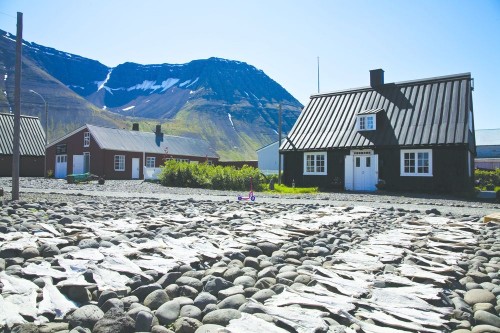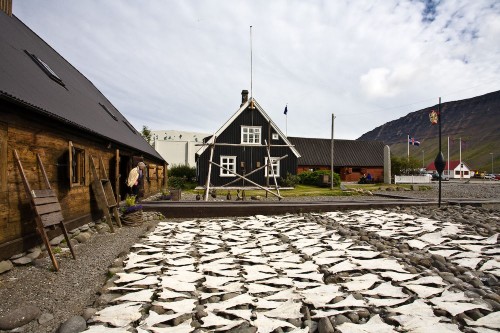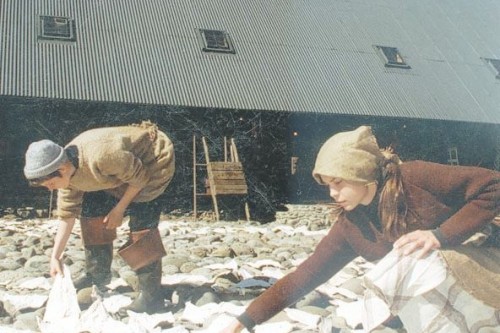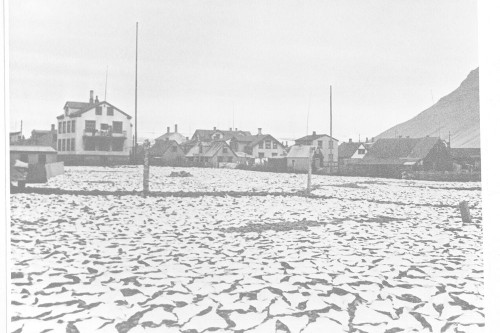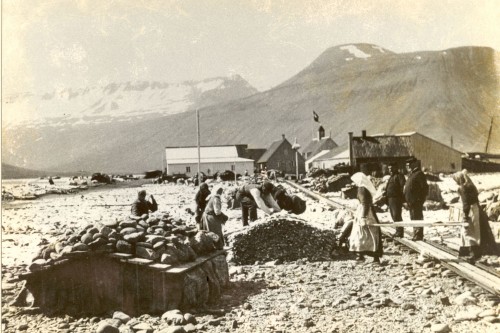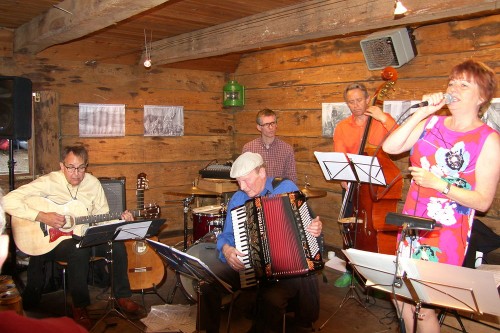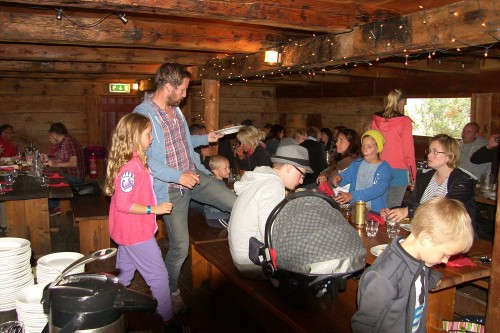Karítas Skarphéðinsdóttir - Maritime history of Ísafjörður and the urbanization of the 20th Century
In 2023, there are plans to make changes to the museum's basic exhibition, but this mainly consists in
revising the exhibition on the lower floor so that it best reflects the history of the town, the region as
a whole and the rise that took place when Danish merchants traded in the "Eyri" (Ísafjörður town) and
the time when the old town was built up in line with the growing port activity and the fishing industry.
On the second floor there is a home of various things that are supposed to give the visitor a brief point
of view of how the household has changed trough the decades, toys, eletronics, kitchen equiments etc..
With the growing fish industry and the income that came with it the homes were able to develope from having a few
but necessary things into homes that had a room for everyone and almost everything thing.
On the top floor there is the viewing tower (turn) That explaines the name of the house Turnhúsið and
there are also on display few boat models, small reproductions of boats and vessels from the Westfjords mostly
made by local people and fishing equipments from different times in the fishing history.
In an interview that Margrét Sveinbjörnsdóttir took with the historian Sigurður Péturson for the radio programme, My Name is Karítas Skarphéðinsdóttir, she asked him whether people in the West Fjords of Iceland knew about Karítas and her contribution. His answer was a simple “No”, common women from the first quarter of the twentieth century are not a part of the large dial of history ticking away in coherent time, from a second to a minute to an hour. Or from Jón Baldvinsson to Jón Baldvin Hannibalsson.
Karítas is an icon of a place and an ideological time, she is a body of a woman who was not meant to govern herself. Thus, she was traded for a building at the tender age of sixteen. Rosi Braiotti has written about the consequences of belonging to an undefined minority in her book Metamorphoses. In it she claims that the body is at the centre of political power, both with regards to the larger macroeconomic context and the smaller personal, or micro, context. This is the force that drives the global economic system to the cost of the citizen’s bodies. The masses are under the control of these forces and thus takes on the role of the episode.
In his novel, Immortality, the writer Milan Kundera discusses the episode in reference to Aristotle:
“In Aristotle's Poetics, the episode is an important concept. Aristotle did not like episodes. According to him, an episode, from the point of view of poetry, is the worst possible type of event. It is neither an unavoidable consequence of preceding action nor the cause of what is to follow: it is outside the causal chain of events that is the story.” (Immortality, translated from the Czech by Peter Kussi, Harper Perennial, 1992, New York, p. 304)
Karítas took a conscious stance towards her own life and situation, she decided to present herself as a vehicle for change, both in her private life and by taking on external forces, such as authorities and institutions. Halldór Ólafsson commemorated her in the left-wing newspaper Þjóðviljinn using these words: “Karitas would have been a woman of medium build, slight, and light in movement. She dressed well and was chided by ungainly fellows and others who felt that commoners had no right to dress decently. She was one of those people that did not let poverty diminish her. She was articulate and presented her case with determination and resolution.”
The character Karítas Skarphéðinsdóttir evidently had no interest in the role of the episode. Her dialogue and activity in the surroundings should have rendered lasting Immortality, immediately and before the flesh got weary. A permanent place on the dial of Icelandic history.
Kundera builds on Aristotle but adds this: “...no episode is a priori condemned to remain an episode forever, for every event, no matter how trivial, conceals within itself the possibility of sooner or later becoming the cause of other events and thus changing into a story or an adventure.” (same, p.305)
I do not assume that Karítas meant to become an adventure, but she did leave behind a story that we, at the Westfjords Heritage Museum, strive to tell with a brand new permanent exhibition. Her dialogue with the powers that be resulted in reforms for shorter and longer periods of time delivering an improved standard of living for the working classes. The hand of history is pointed towards a woman, who was supposed to be an episode but took initiative and the effort to take control of her own life, a coherent chain of events, from Karítas Skarphéðinsdóttir to Björk Guðmundsdóttir.



